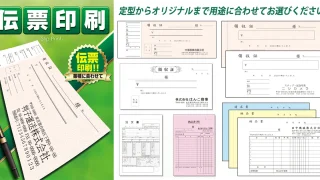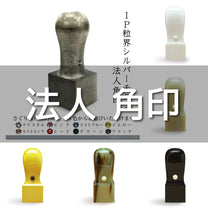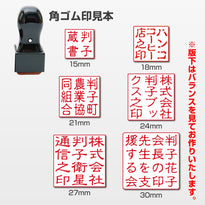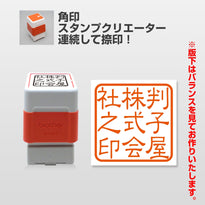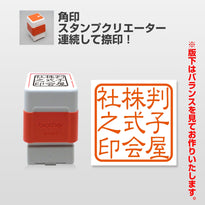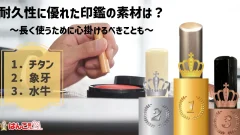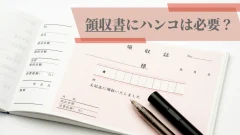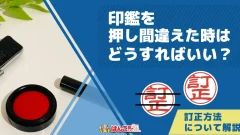Receipts are documents that are required for expense settlement, but there are times when you receive a HANKO that does not have a seal on it. In such cases, you may be concerned about whether a receipt without a HANKO is valid. In this article, we will explain whether a seal is required on a receipt or not.
A HANKO is not required on the receipt.
In fact, a HANKO is not necessarily required on a receipt. A receipt is an important document that proves a transaction when calculating corporate and income taxes. The National Tax Agency defines a receipt as one that includes the following items:
- Receipt creator/company name
- Transaction contents
- Transaction date
- Total amount per tax rate
- Receipt addressee
In other words, the issue is whether or not the "information that is recognized as an expense" and the "information that is recognized as an input tax deduction" are clearly stated. Therefore, if all of the above items are listed, a receipt will be recognized as a receipt.
Whether or not a receipt has a seal does not affect its validity in any way, and there is no regulation that requires a seal to be affixed to a receipt.
No problem with expense settlement
When purchasing company equipment or entertaining a business partner, you receive a receipt from the store and use it to settle your expenses. Generally, receipts have the amount, recipient's name, and any notes written on them, and are stamped with the store's or person in charge's HANKO. However, even if the receipt does not have a HANKO, it is not a problem for accounting purposes.
In accounting, it is important to know whether the receipt can be used to support the entries in the ledger and whether it can be confirmed as an expense. Therefore, there is no problem as long as the receipt contains the preparer's name, company name, transaction date, transaction content, total amount by tax rate, and the recipient's name.
In addition, if the receipt has the name of the store, the date of issue, the product name, and the amount, it can be treated as a receipt. Although the recipient's name is not written on the receipt, there are exceptions to the law, such as retail businesses such as convenience stores and supermarkets, passenger transportation businesses such as taxis and public transportation, and restaurants, which do not require a recipient's name on the receipt.
In addition, if the amount is small, less than 30,000 yen, it is recognized as eligible for input tax deduction under the Consumption Tax Act even if you do not have a receipt.
Why do typical receipts have HANKO on them?
Although receipts are legally recognized even without a HANKO, most general receipts have a HANKO affixed to them. Here we explain why.
To prevent counterfeiting
A seal on a receipt serves as proof that it was officially issued by the company. Although receipts are recognized as receipts without a HANKO, there is a risk that they can be easily forged. If a receipt is forged, it will affect the company's credibility. There is also a risk that it may be misused for fraudulent expense claims, etc.
To prevent such counterfeiting and misuse of receipts, the company's stamp is usually stamped on them. Some companies have internal regulations that require receipts to be stamped.
To avoid giving a bad impression to business partners
Another purpose of HANKO receipts is to avoid giving the recipient a disrespectful impression. Many companies and stores HANKO their receipts, so when they see a receipt without a stamp, they may think, "Did they forget to stamp HANKO? What a careless company." Also, some companies may feel distrustful of the company that issued the receipt.
If you cause distrust in your business partners, it could have a major impact on future business. In other words, many companies believe that a HANKO is necessary on receipts in order to build good relationships with their business partners.
Although a HANKO is not required on a receipt under tax law or for expense purposes, in some cases the HANKO on the receipt can play a very important role.
How to HANKO a receipt
As mentioned above, a HANKO is not required on a receipt, but there are many cases where it is better to stamp it to prevent counterfeiting and to build HANKO with business partners. From here, we will explain how to stamp a receipt.
Type of HANKO to be used
There are two types of company HANKO: square seals and round seals. Square seals are the company's official seals, have the company name on them, and are square shaped. Round seals, on the other hand, are the company's official seals registered with the Legal Affairs Bureau, and are round shaped. There are no regulations regarding the HANKO that can be used on receipts, but round seals are used to open company accounts and make contracts. Considering the risk of HANKO, it is better to use square seals for receipts.
If you are stamping the HANKO of a person in charge at a restaurant or department store, you can use a Shachihata stamp. Since stamps on receipts are not required in the first place, the HANKO of the person in charge is not required either. The purpose of stamping the receipt is to give a polite impression and to make it clear who the person in charge is in the unlikely event of a problem. Therefore, the type of HANKO does not matter.
What color is the HANKO?
There are no regulations regarding the color of the HANKO to be stamped on receipts, but it is common to stamp it in vermilion or red. The company name on the receipt is often printed in black or stamped with a black rubber stamp, so if the HANKO is black, it may overlap and be difficult to see. Also, many people think that HANKO are vermilion or red, so they may feel strange when they see a HANKO stamped in black.
Where to stamp HANKO
It is common to HANKO a receipt so that it covers the company name and address of the issuer. However, the position of the stamp can be freely set, so it varies depending on the company or organization. Similarly, if you are a sole proprietor, you should stamp so that it covers the issuer's name and address. In any case, it is important to stamp in a place that takes visibility into consideration, such as the top right or bottom right.
When a person in charge stamps a stamp at a restaurant or department store, if there is a designated place, they should stamp it there, otherwise they should stamp it to the right of the store name. If the receipt is handwritten, they should stamp it where it says "Staff Stamp" or "User Stamp," otherwise they should stamp it to the right of the store name.
There is no problem with electronic HANKO on receipts
It is also fine to use an "electronic HANKO " that prints an impression of a seal instead of HANKO it on the receipt. There are two ways to make an electronic HANKO: by scanning the seal and converting it into data, or by creating an impression on a dedicated website.
The method of scanning the stamp and pasting it onto the receipt format is likely to be reliable because it uses the actual company seal. However, there is a risk that it may be misused if it is leaked.
On the other hand, there is a method to create the seal impression on a dedicated website, but recently, more and more HANKO shops and dedicated websites are allowing you to create them. Some paid software has a "time stamp" function that lets you know when the electronic HANKO was pressed, which is useful for preventing fraudulent use.
However, be aware that some business partners may prefer receipts with a regular HANKO rather than an electronic HANKO .
Postmark on revenue stamp
A HANKO is not required on receipts, but a cancellation mark (two-stamp) is required on revenue stamps. Receipts for amounts over 50,000 yen must have a revenue stamp affixed. A cancellation mark (two-stamp) is required where the HANKO is pressed across the pattern part of the revenue stamp and the backing paper. As long as it straddles the pattern part and the backing paper, it doesn't matter where the cancellation mark (two-stamp) is pressed - up, down, left or right.
Simply affixing a revenue stamp does not mean that you have paid the tax. You will be required to pay three times the amount of the revenue stamp as a penalty.
In addition, the Stamp Duty Act stipulates that a cancellation mark (two-sided stamp) must be affixed to prevent the document from being reused.
Please be careful not to confuse the seal on the receipt with the HANKO(two-note stamp) on the revenue stamp.
summary
It is not necessary to HANKO receipts with a seal, but it is generally a good idea to do so. Even if you receive a receipt without a seal, it can still be recorded as an expense, so there is no big problem. Use this article as a reference and use receipts with peace of mind.
Related products
Related article
 日本語
日本語 English
English 简体中文
简体中文 繁體中文
繁體中文 한국어
한국어 ไทย
ไทย Tiếng Việt
Tiếng Việt Indonesia
Indonesia Français
Français Español
Español Português
Português

